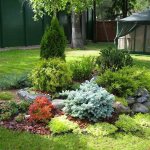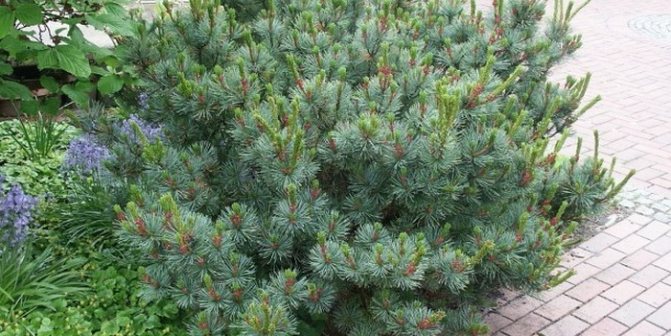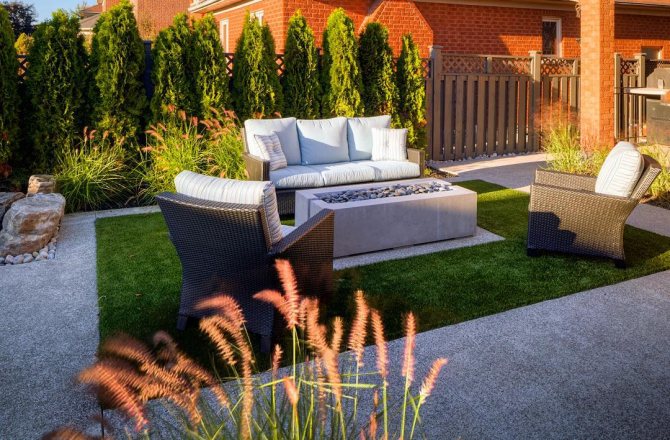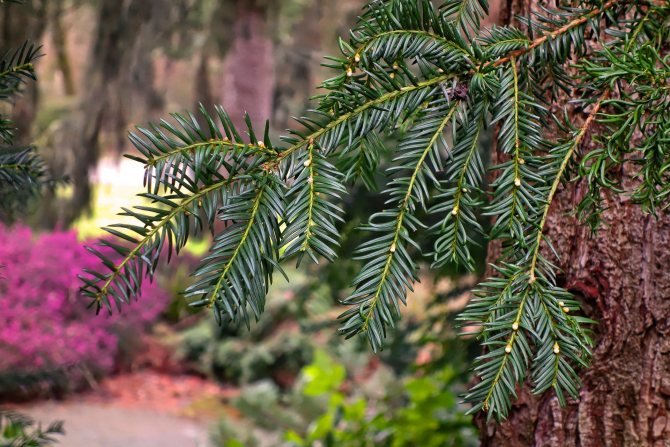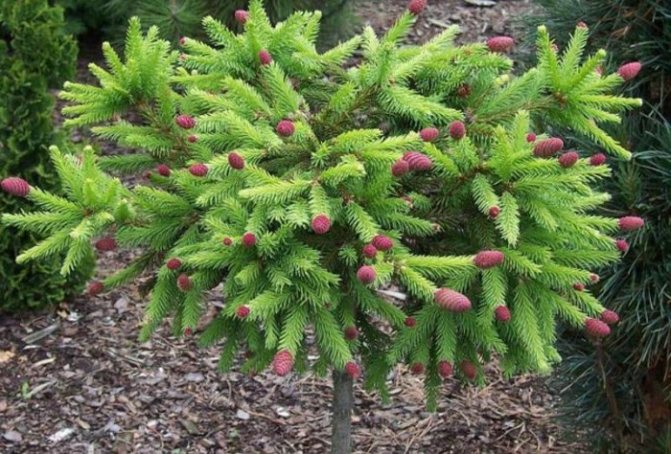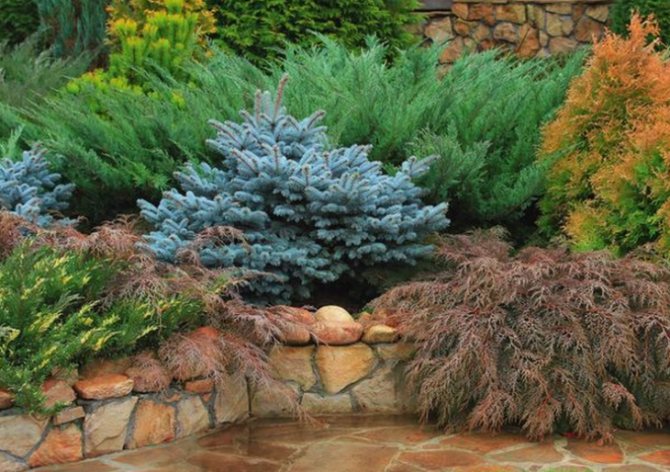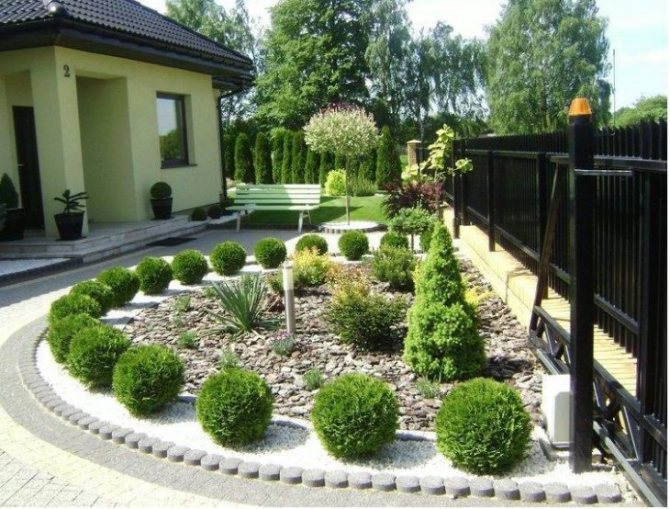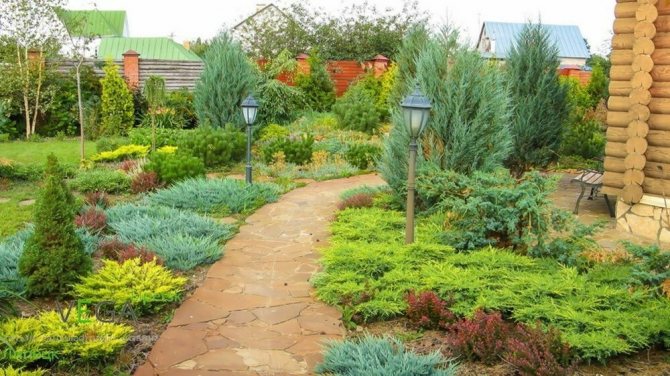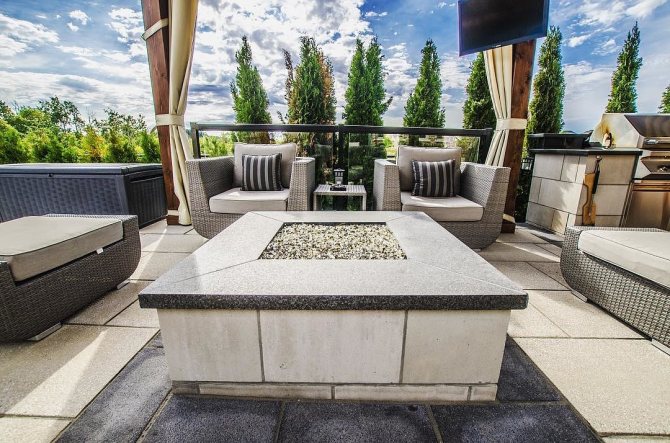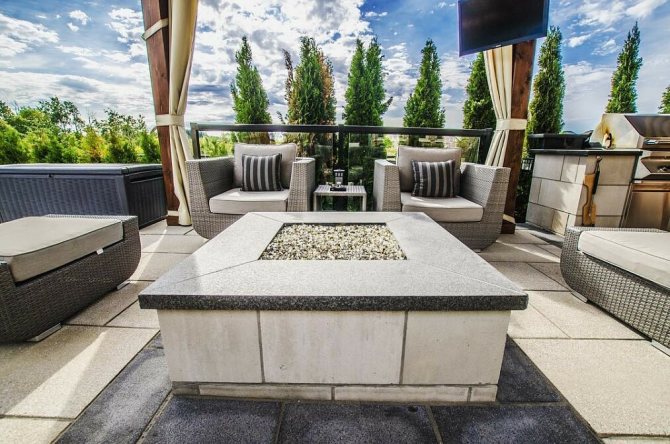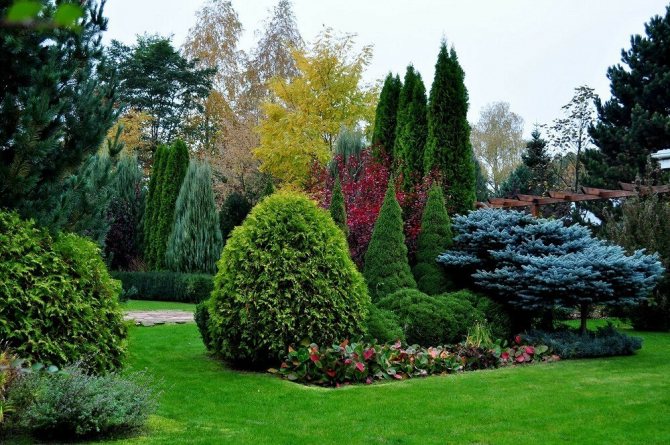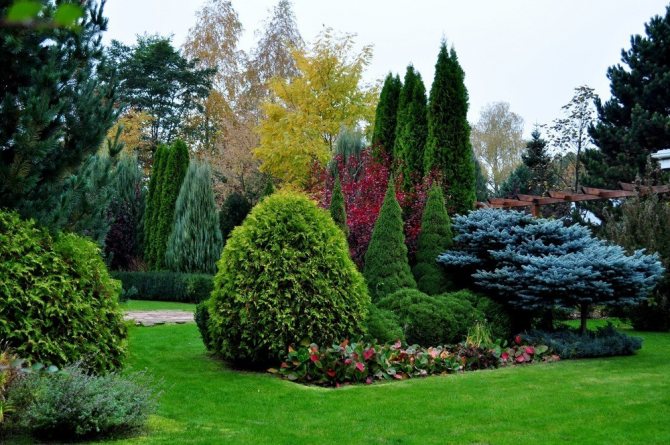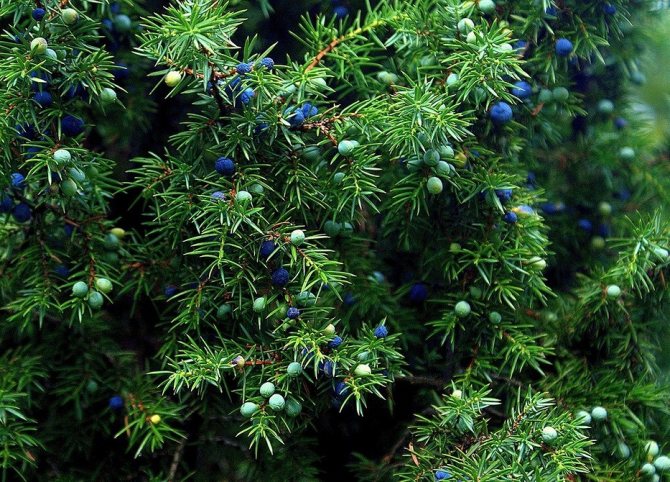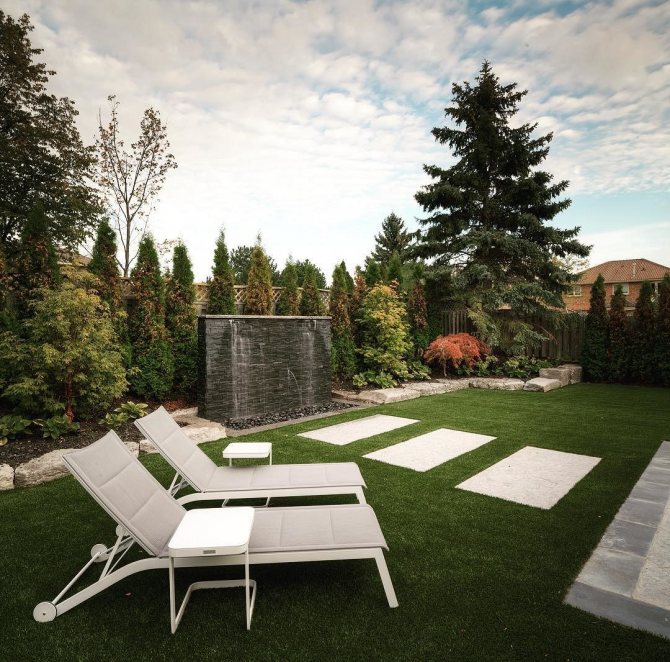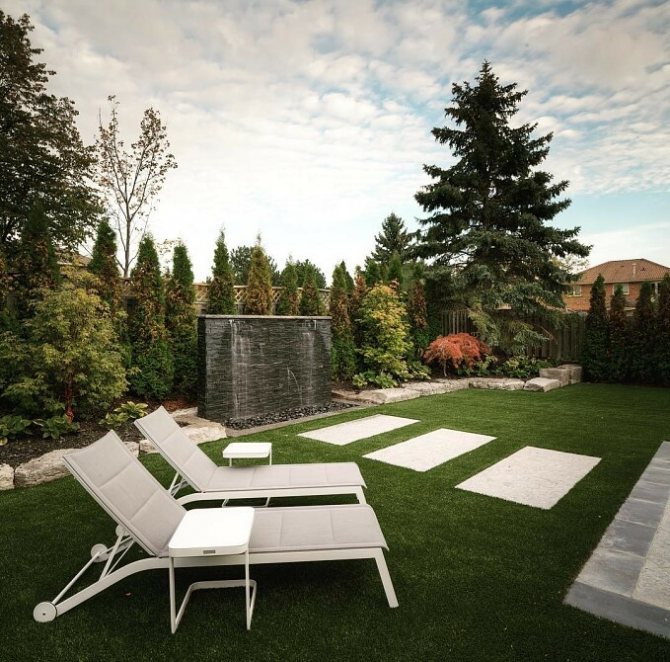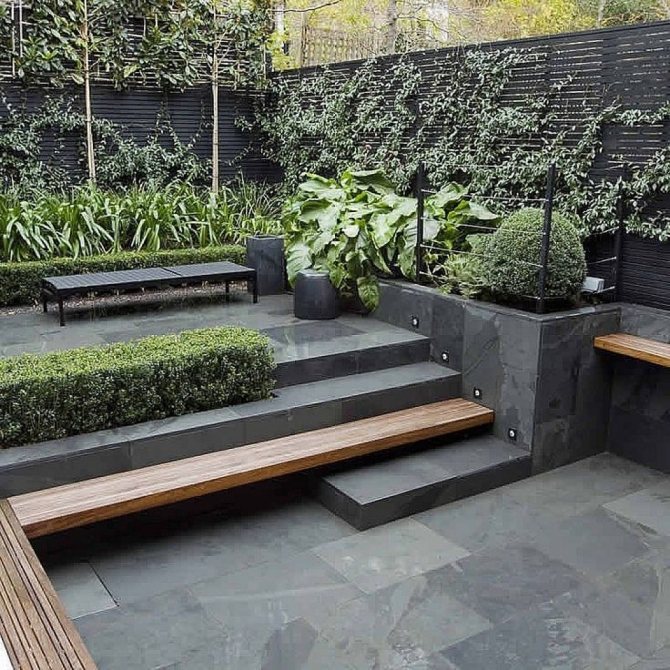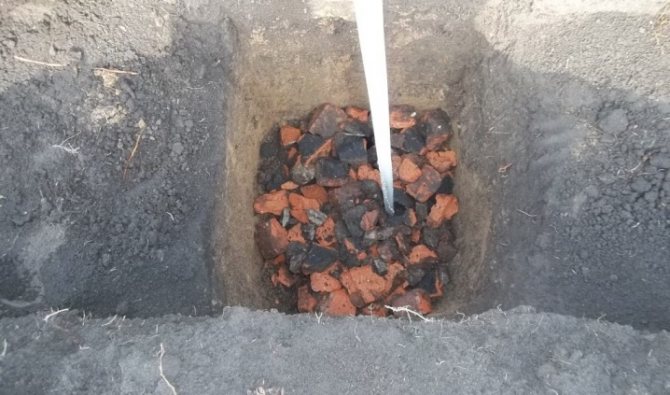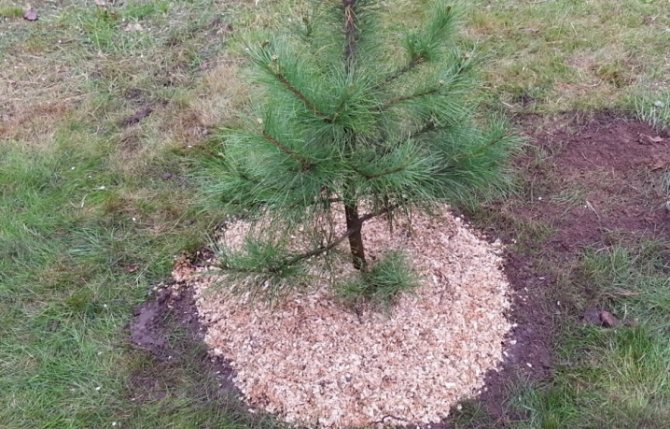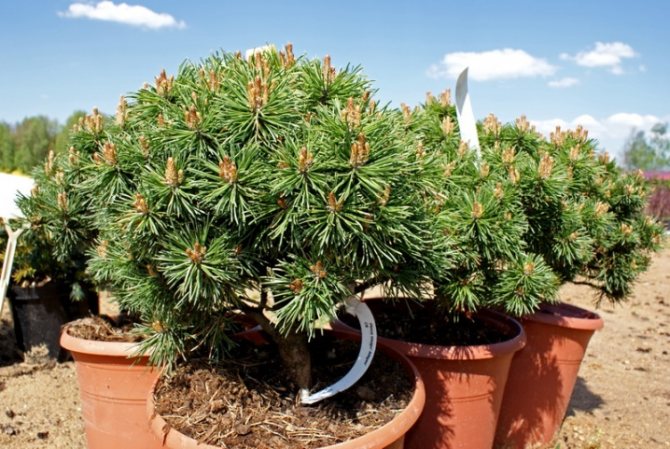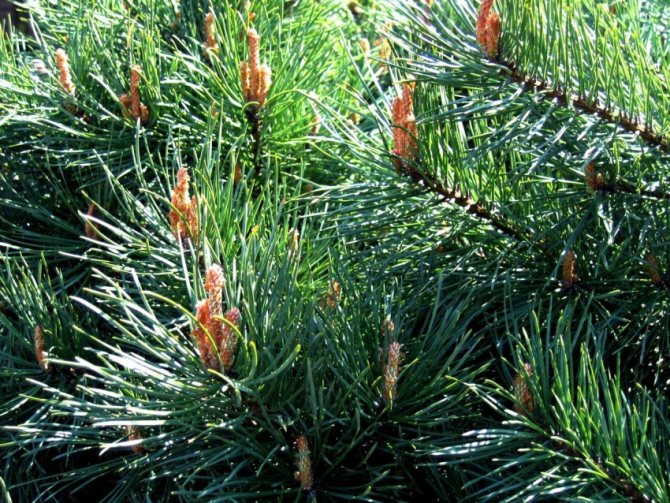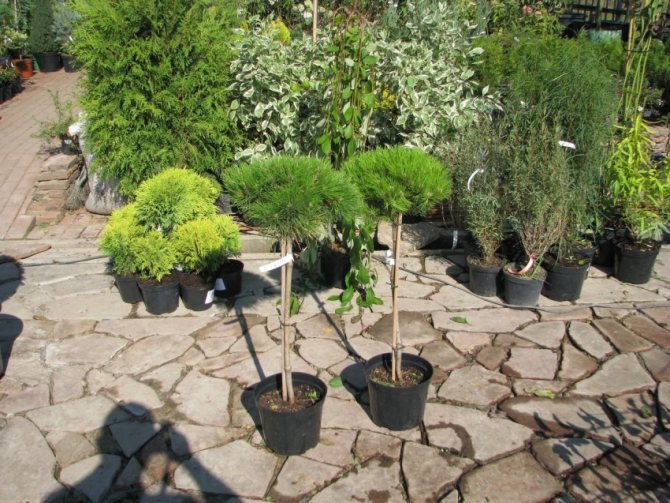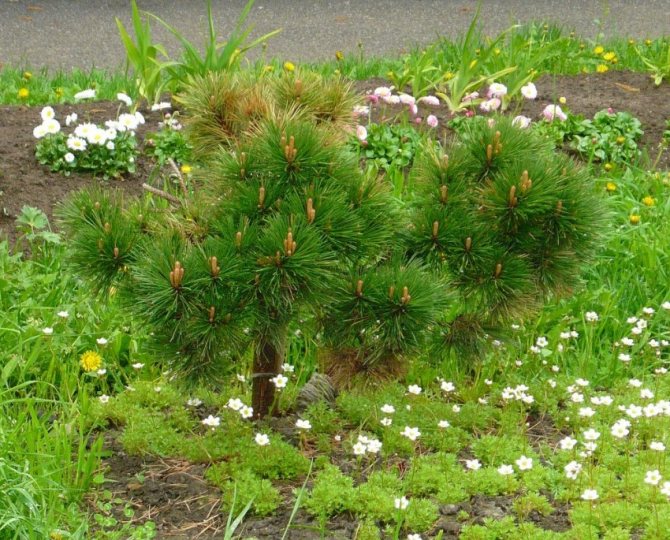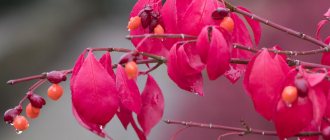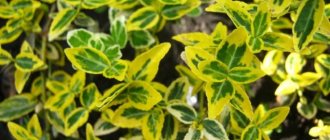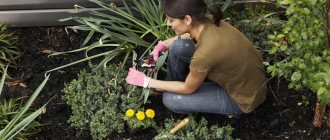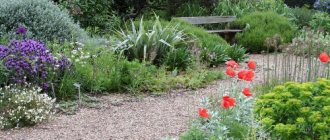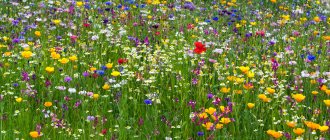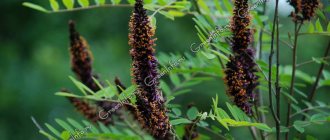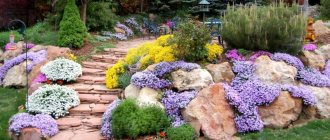Conifers in the landscape design of a suburban area
Evergreen conifers, which all year round allow us to admire the greenery and breathe in a pleasant aroma, are very popular with country residents and summer residents. Single plantings of large trees, hedges, group plantings and borders of stunted and dwarf plants can decorate both a miniature summer cottage and a large park.
Conifers are distinguished by a wide variety of shapes, sizes and shades. They are quite unpretentious and undemanding to care, rarely get sick and grow in one place for a very long time. Therefore, many want to have them on their site.
Where to plant dwarf conifers?
Dwarf conifers, if not collected, can live in several places:
- They can become a decoration of a rock garden or just a rocky hill. Among the stones, these "hedgehogs" look just great. They are combined with flowering "Alpines" and just with small plants and are a wonderful background for them.
- Dwarf conifers are sometimes so interesting that it is worth planting them in full view: along the path or near the terrace. That is, in any place where the gaze will constantly fall on them.
- Miniature conifers are ideal for planting in a Japanese garden.
- Grown dwarf conifers can grow in a regular mixborder along with perennials and ornamental shrubs. But they will have to grow up to that.
- They also look good in a gravel garden. Gravel perfectly sets off their beauty and uniqueness. There they will definitely not go unnoticed.
Mountain pine growing
Mountain pine is an unpretentious plant. The optimal time for planting is spring (late April - early May) or autumn (late August - mid September).
Prefers sandy loam soils or light loams, but does not have any special requirements for soil fertility. Drainage is required on heavy soils. When planting, the root collar is not buried.
Plants are drought-resistant. Planted pines are watered in dry summers. At first, the soil around is mulched.
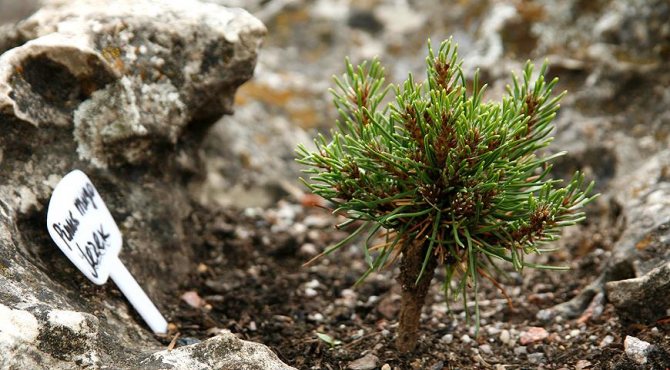
Mountain pine grade Jezek
It lends itself well to shaping. In spring, young annual growths can be shortened, which will contribute to the formation of a denser crown and restrain growth.
Young pines and ornamental forms can suffer from sunburn.
What conifers can be considered dwarf?
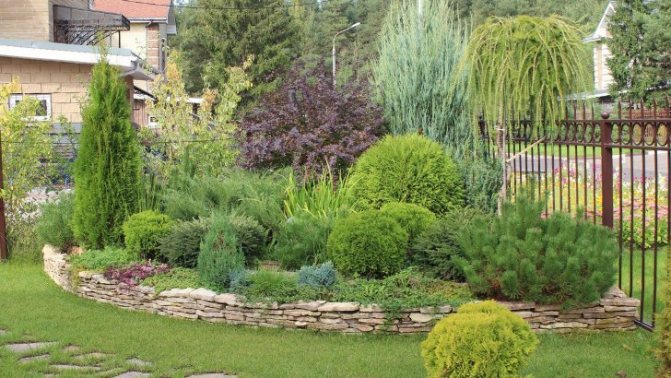

What kind of plants can be called "dwarfs"? Probably, those that are much smaller in size than nature should have for this species.
But, for example, the Christmas tree grows not 20 m, but, for example, 10. Is this a "dwarf"? Of course not.
Therefore, we will try on their growth on ourselves. For example, if a tree grows no more than human height in 20-30-50 years, let's call it a "dwarf". And creepers should not be wider than the span of the arms.
How to determine the future size of a dwarf conifer?
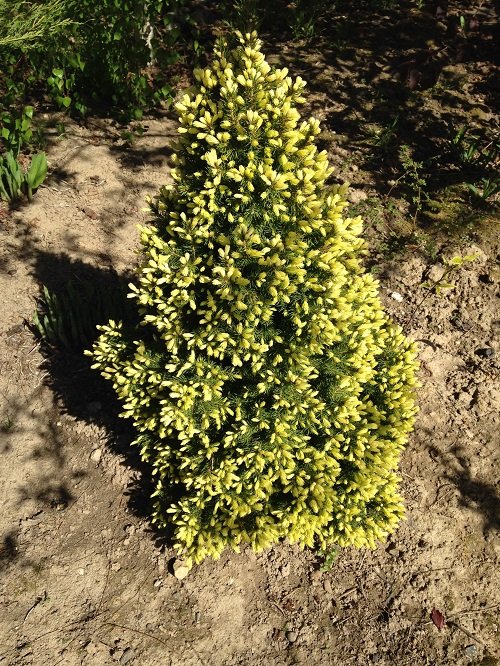

When buying a plant in the spring, look at the growth and then multiply it by the number of years. For example, if a Christmas tree has grown by 2 cm per year, in 10 years its height will be 20 cm higher. Keep in mind that it will grow in width as well.
"Dwarfs" on closer inspection are sometimes not so small. This is important to know in order not to be mistaken with the landing site.
I will give my example of an unsuccessful pine planting. We bought a pine at the market, they said it was dwarf. We had no experience, they planted her near the path.
She grew up like this for about 10 years. And she grew up to the path, began to interfere with the passage. Its height was about a meter, small, but its width ...
I had to uproot it at the peak of decorativeness. It's a shame, of course. But you will not constantly increase the width of the path, and you cannot tolerate pine transplanting at this age. It was not easy to uproot it.
Therefore, when choosing a place for a dwarf ephedra, look for a suitable place, taking into account its size, not in 10 years, but better in 20-30. Time flies by quickly.
Reproduction
The propagation of dwarf pines by amateur gardeners can be carried out using the seed method or cuttings.
Seeds
The seed method is longer and more laborious. Cones with seeds suitable for reproduction appear only after 6-8 years. They resemble small grains. They are taken out of the ripe bud and placed in a paper envelope, which is placed in a warm place. Shake it periodically.
Having warmed up, the grains open on their own, and seeds fall out of their sinuses.
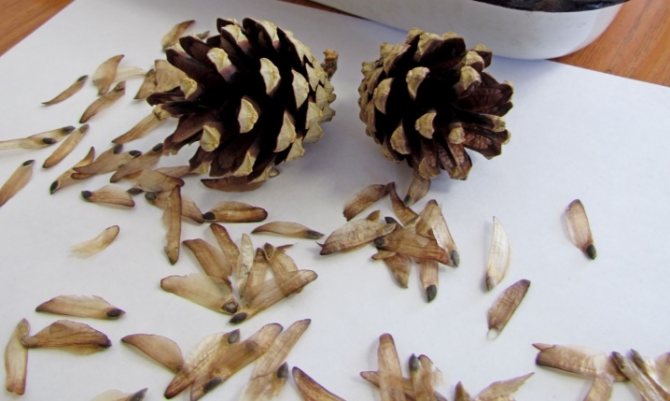

Sowing is carried out in the autumn. Seeds are lowered shallowly into a container with moistened sand and taken out into a cool room (veranda, balcony, basement).
The air temperature should not exceed 5-7 degrees Celsius.
In the spring, the container must be brought into the heat, the seeds must be taken out and again sown in the previously prepared and loosened soil to a depth of 2 cm.
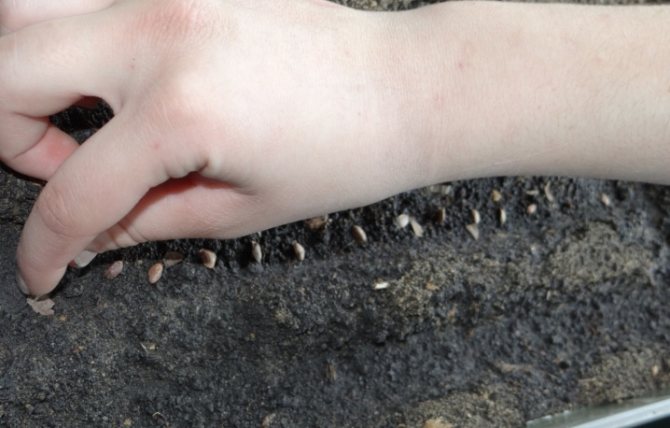

Place the sown container in a bright and warm place (best on a windowsill) and cover with foil or glass. Make sure that the soil always remains moist; for this, periodically water it with water at room temperature. When the first shoots appear, the film or glass can be removed.
The seedlings need supervision and care, they can be transplanted into open ground only in the fall, and with the onset of cold weather, they must be covered with spruce branches.
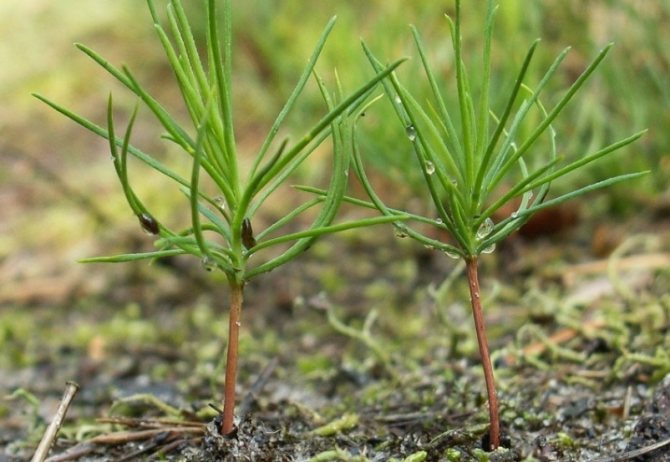

Cuttings
Reproduction is possible in the spring. The cuttings are cut with the part of the tree to which they were attached and lowered into the water for about 3 hours so that all the resins come out.


Planting is carried out in a previously prepared container with fertile soil (garden soil, peat and sand are mixed in equal proportions). The deepening should be 3-5 cm and be 10 cm apart from each other. Cover the container with foil and put it in a bright place. You can plant cuttings in a greenhouse or greenhouse. Care consists in moderate watering and light loosening.
It will take a year for the firm rooting of dwarf conifers, and only after this period can the pines be planted in a permanent place.
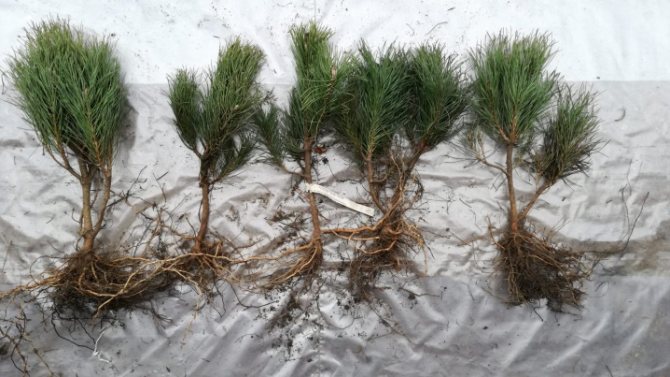

Cons of dwarf conifers
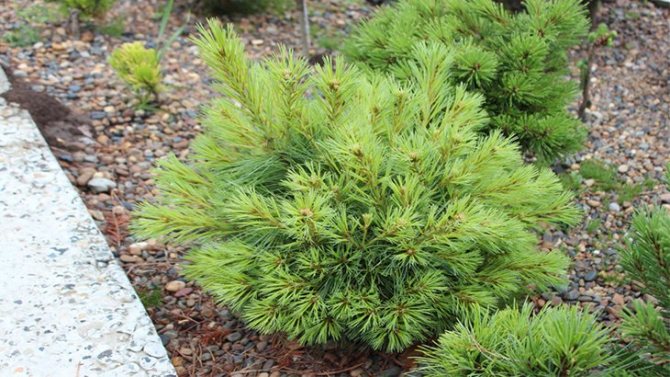

Despite the many advantages, you need to know about the disadvantages of these plants. Dwarfism in the climate of the middle zone has both pluses and minuses.
From the pros - they are covered with snow in winter, and they do not freeze. But the crown may suffer from snow. Therefore, if possible, tie the branches with a rope. Otherwise, the spring crust can break them.
If it is a damp, mild winter, which happens often now, fungal diseases develop in the crown of the "dwarfs". Therefore, at the same time, stock up on special drugs (Fundazol, Hom, Ordan).
I advise you to process ephedra in autumn and spring, when the snow melts. If necessary, then in the summer.
Description of the plant
Mountain pine is an evergreen, multi-stemmed shrub that grows up to 5 meters in height. The shoots of the plant are short, spreading, and slightly curved upward. A highly branched root system is located superficially, and this must be taken into account when loosening the soil. Coniferous needles are small, 4-6 cm long, dark olive colored. Bumps begin to form from the age of six.
Dwarf pine is irreplaceable in landscape design. Has a number of advantages:
- frost resistance and drought resistance;
- thanks to its strong rhizome, it endures gusty winds;
- pine is unpretentious to the composition of the soil;
- responds well to crown formation;
- has a strong immunity to diseases;
- with good care, life expectancy is up to 1000 years.
What dwarf conifers are on sale?
As soon as you get one “hedgehog”, the thought immediately comes: “What else to buy? So that it was also prickly and small, but it would look different. "
The plant market has made us happy in recent years. Including coniferous dwarfs.
Pine
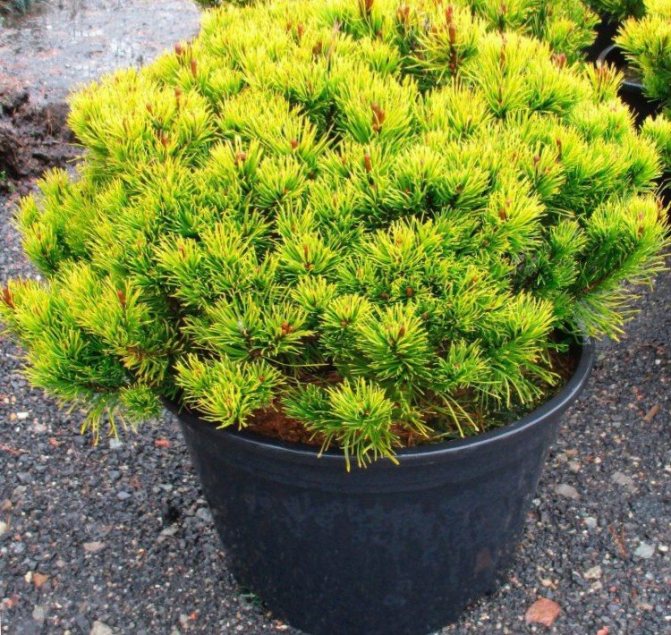

The mountain pine (Pinus mugo) is the leader in the number of dwarf varieties that grow well in the middle lane. It is good because it does not freeze, does not burn in winter, and is less affected by fungal diseases.
There are many varieties available for sale. Yes, and the species pine is not so big, although it does not pull on a dwarf. Its variety is on sale everywhere Pinus mugo var. pumilio... It also takes up a lot of space. I suspect that the pine that we had to uproot was of this particular variety.
There is a grade Varella, it gives an increase of 5 cm per year. Also, not the smallest size will turn out. By the pine Allgau growth up to 6 cm in height and 3-4 cm in width.
Jacobsen grows more in breadth than in height. And here is the grade Suzi very small, it grows only 2 cm per year.
There are dwarf varieties in the Weymouth pine. Blue needles in the variety Tiny Curls... BUT Sea urchin looks like a prickly hedgehog. Unfortunately, these varieties are more susceptible to fungal diseases than others.
Our native pine does not have especially dwarf varieties. But European and Siberian cedar pines, Banks pine can boast of dwarfs. It is worth looking for them on sale.
Spruce
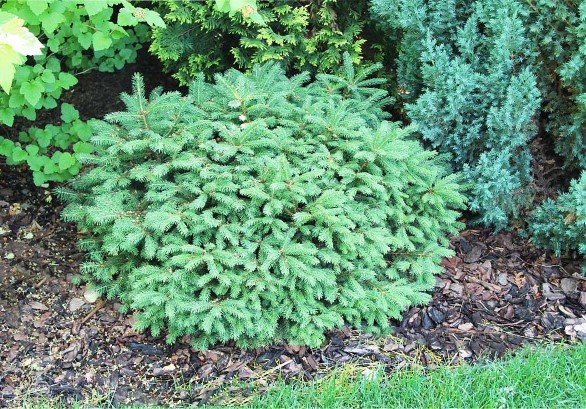

Norway spruce (Picea abies) gave us a huge number of decorative, unpretentious dwarfs. Although in appearance they are all similar to each other.
Most often on sale there is Little gem - not quite a kid. It grows 3-5 cm per year. After 10 years, you get such a rather big thorny pillow.
And here is the grade Minuta at 10 years old, it is a pillow only 25 cm in diameter. There is a weeping variety Formanek with an increase of up to 6 cm per year. It is ideal for retaining walls and slides.
Aurea wb - a pillow with yellow young shoots. In the summer they turn green. Funny Christmas tree Pusch grows not so small.
Varieties of prickly spruce (Picea pungens) have blue needles. The old variety is widespread Glauca globosa... It's pretty big.
Pink cones and blue needles of the variety look very cute Germann Naue... It grows in a wide pyramid.
Sitka spruce varieties (P. sitchensis) in our area were not sufficiently winter-hardy.
Everyone knows the variety of Canadian pine Conica... It is popular, but without being wrapped in burlap, it burns badly in winter.
Fir
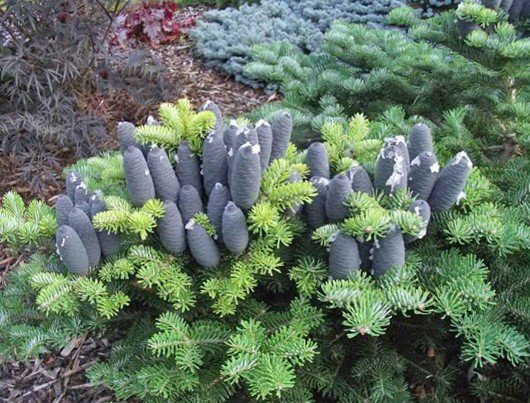

If you decide to have a small fir, remember that in the first years of life, it often suffers from fungal diseases.
If the needles on the top of the head begin to turn brown, urgently apply fungicides.
When buying fir, make sure that the variety has not been grafted onto white fir. It is not very hardy in the middle lane.
In recent years, the Korean fir variety has been popular Icebreaker... It has swirling needles and a flat pillow. Growth up to 5 cm per year.
Bright yellow variety Golden Speader Fir Nordmann will live with us until the first snowless winter.
Thuja
Thuja western grows well, completely unpretentious. Its variety is known Danica - a ball that grows maximum to the chest. It has been growing in my garden for many years, it requires a garter of branches in winter. If I forget, sometimes branches break off after winter.
Larch
Larch varieties are similar to one another. They look like a pillow without a shape. The smallest of them is Wolterdingen.
Larches do not get sick. They grow only in the sun.
Hemlock
If you have a shaded garden, look out for the hemlock dwarfs. Variety Gentsch white has an increase of 12 cm per year, but is interesting with white tips. And here Minuta really a dwarf, growing only 1 cm per year.
Juniper
Junipers grow quickly, even cushion varieties. 3-5 cm adds a yellow variety of horizontal juniper Mother lode.
Of course, in one article you cannot list all the varieties of dwarf conifers for the garden, and I did not have this goal. New beautiful and untested varieties appear all the time. It is up to you to pay money for them or limit yourself to buying an old, but proven variety.
Disease protection
Despite the high resistance to diseases and pests, conifers can still get sick. Moreover, most often the cause of diseases is improper care and inappropriate growing conditions. At the same time, young shoots can dry out, needles turn yellow and fall off.
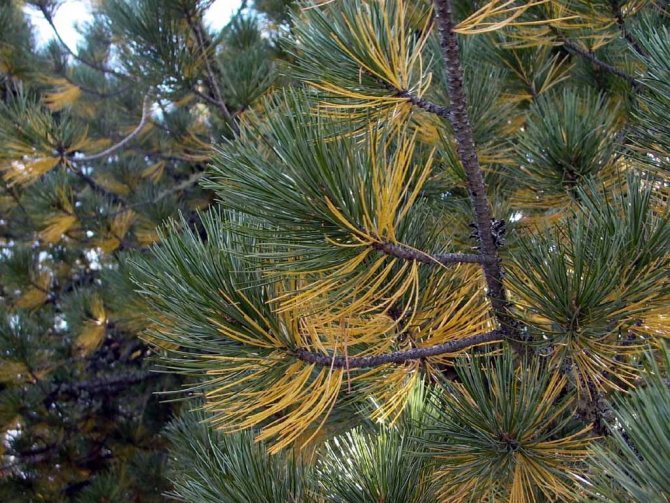

Yellowing needles are a sign of improper care
The most common causes of such problems are:
- Excessive waterlogging of the soil. In this case, a drainage device will help.
- Drying out of the roots. This most often affects moisture-loving yews and thujas, as well as any young plants, the watering of which should be given special attention.
- Wrong location. The needles turn yellow and crumble in direct sunlight. Therefore, you need to pay attention to the preferences of a particular plant. Most conifers prefer partial shade.
They can also suffer from air pollution from toxic emissions from industrial plants and vehicles.
Conifers are quite resistant to infectious diseases, but they can be affected by fungal infections. The fungi grow into the trunk and interfere with the free movement of water and nutrients.
For reference. Only conifers are ill with the fungal infectious disease Schütte. Especially weak, young and recently transplanted. The disease manifests itself in the spring of the year following the infection, so it is impossible to "catch" it in time. It is characterized by yellowing and shedding of needles, the appearance of white, gray or black bloom on the shoots.
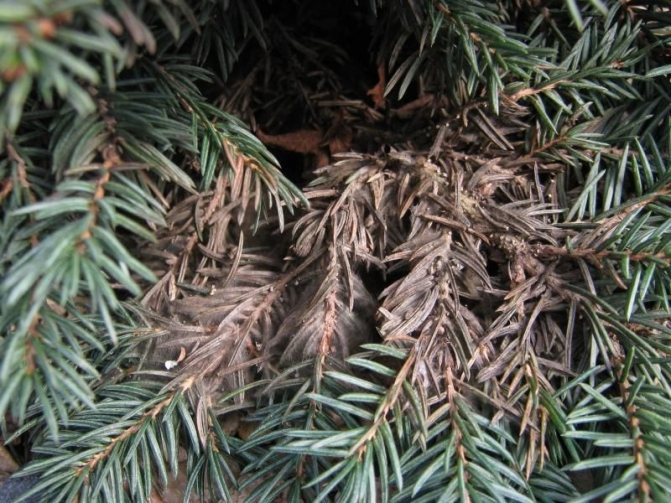

Signs of Schütte's disease
Plants are treated with biological products such as Fundazol or Fitosporin, treating them several times with a break of 7-10 days. You can also use a 1% solution of copper sulfate.


Fundazol is a complex remedy for many diseases
What conditions do dwarf conifers need
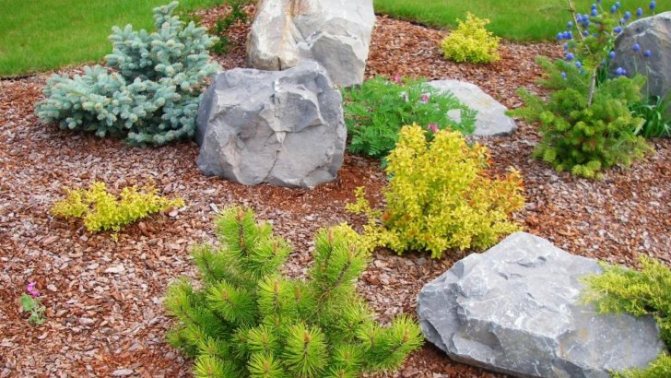

- Most of the small conifers grow well in the sun, except for hemlock and yew. Thujas, spruces (except for prickly spruce) and junipers adapt to a small shade.
- Babies do not tolerate stagnant moisture; in drought they require watering.
- The best land for them is light loam.
- Coniferous dwarfs love mulching.
- Stamp forms and "balls" do not require a garter in winter.
- In the fall, the "hvoepad" begins. Shake off fallen needles to avoid fungal diseases.
- For the winter, it is better to wrap dwarf conifers in burlap so that they do not burn in the sun. In March, the snow may melt, but the roots in the frozen ground are not yet working. Therefore, the plants are burned.
As you can see, dwarf conifers for the garden have both advantages and disadvantages. They cannot be planted and forgotten. But if you like to tinker with plants, then start them boldly. With careful care, the "dwarfs" will delight you for a long time.
And I have everything for today. If you liked the article, please share with your friends!
Do dwarf conifers grow in your garden? Share in the comments!
Choosing the best place and organizing the care correctly
Miniature representatives prefer to grow in sunny glades. They are not afraid of the wind because of their short stature, unlike standard conifers, which suffer from drafts. The soil can be any, but to preserve the decorative effect, preference is given to sandy loam and loamy soils. If the soil is too heavy, it is drained and peat applied. A neutral or slightly acidic reaction is preferred. For acidic soils, the problem is solved by adding lime.
A favorable time for planting is spring, after the soil has warmed up. An autumn landing is also possible no later than mid-October. In autumn, it is not recommended to plant specimens with an open root system, as they are more sensitive to drought and cold weather.
Planting a miniature plant:
- Before planting, the site is dug up and weeds are removed.
- The size of the planting hole should be slightly larger than a lump of earth with roots. The approximate depth is 60 cm.
- A drainage layer of 20 cm is laid at the bottom and sprinkled with forest earth.
- Organic fertilizers are not suitable for pines, but mineral complexes can be applied already at planting.Kemira-universal preparations or other fertilizers with nitrogen are suitable.


Planting a purchased seedling - The seedling is placed in a hole with a lump of earth, covered with soil, compacted. The root collar should be located just above the ground surface.
When thinking about how to grow a healthy ephedra for a garden, you need to pay attention to watering and mulching. It is advisable to protect young plantings from bright sunlight, snatching them for the winter. Shaping pruning begins in mid-April and ends by June. The tree can be shaped in different ways.
What diseases and pests should be feared?
Common problems:
- Pine aphid is an insect that feeds on the sap of all parts of the plant, which leads to the drying out and falling off of the needles.
- The pine scale insect is a dangerous insect that is almost invisible under the needles.
- If a cloudy layer, like frost, grows on a pine tree, then it has been struck by conifers. The pest causes twisting and dying off of the needles.
- Pine bugs lead to yellowing of the needles along the periphery of the crown.
- Shute fungus occurs when the soil is waterlogged. Fungal disease causes brown needles and their subsequent death. Treatment - removal of damaged parts and treatment of the plant with a solution of colloidal sulfur.
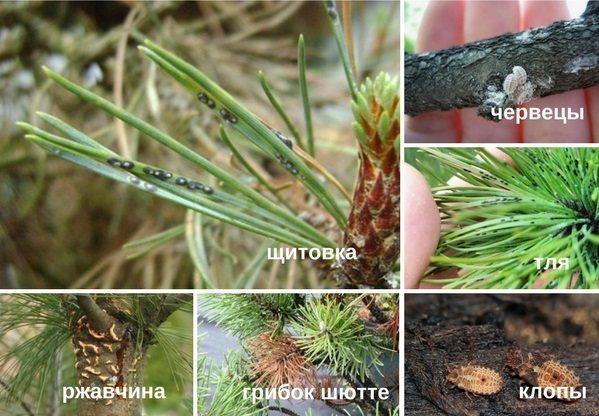

Pine diseases and pests - Another disease is blister rust. It manifests itself as a brown bloom on the needles. Copper preparations are used against the fungus.
To eliminate pests, solutions of insecticides are used, such as Actellik, Akarin, etc. Home remedies in the form of a soap or tobacco solution are also suitable. The infected tree is sprayed with an insecticidal agent, all affected parts are removed, the soil is dug around.
Growing conifers such as dwarf pines is straightforward. Miniature conifers rarely get sick, they successfully tolerate drafts, they are not afraid of high humidity, bright sunlight and frosty winters. Small pines, with proper care, become the main year-round decoration of the local area.

